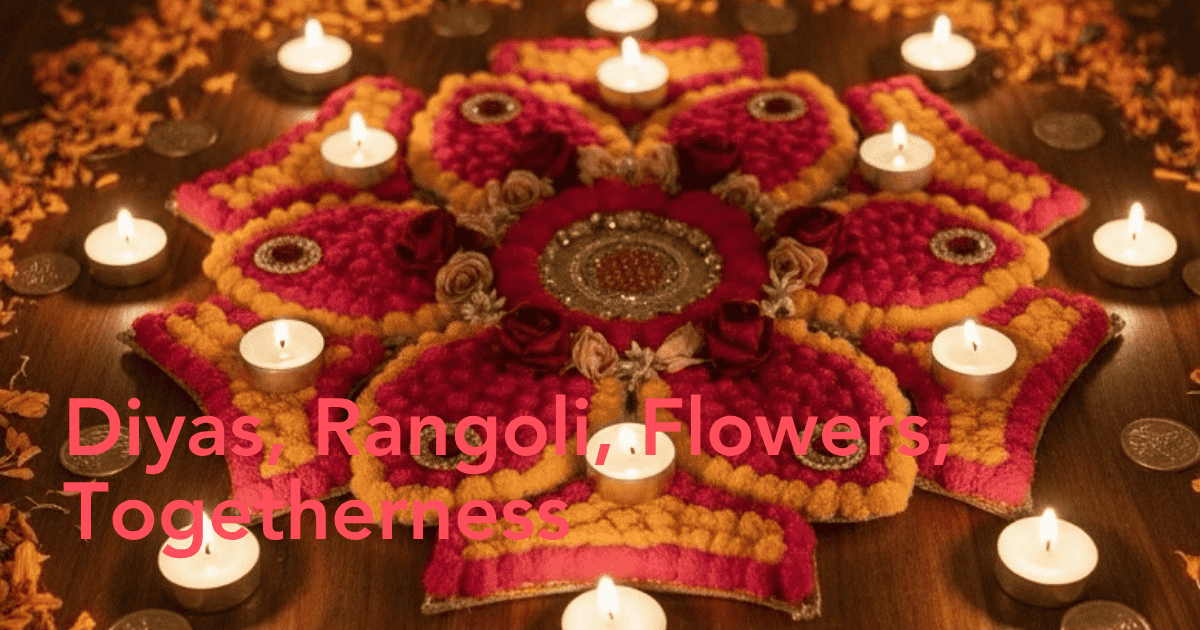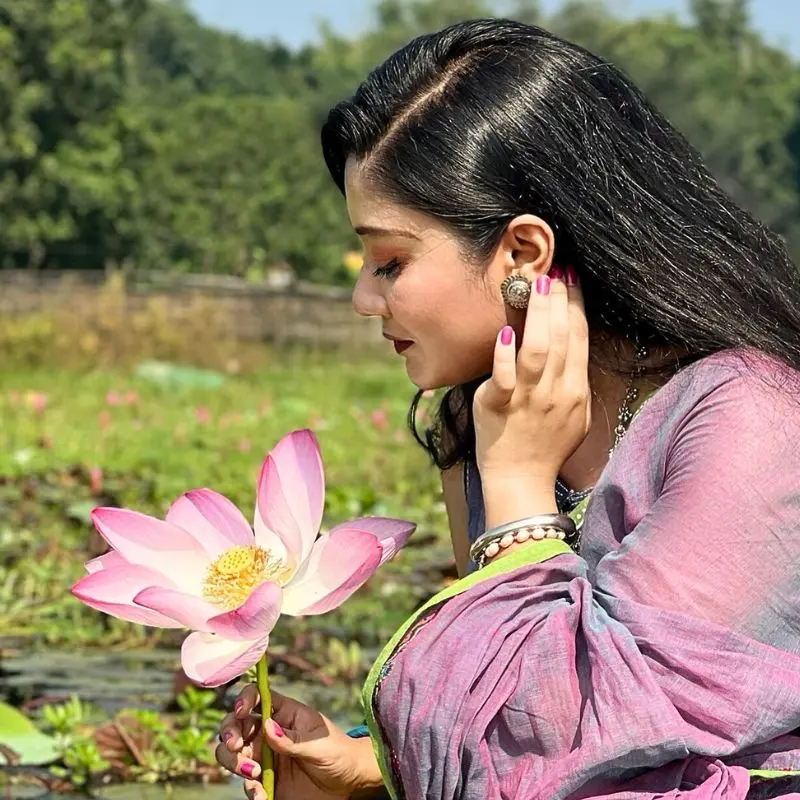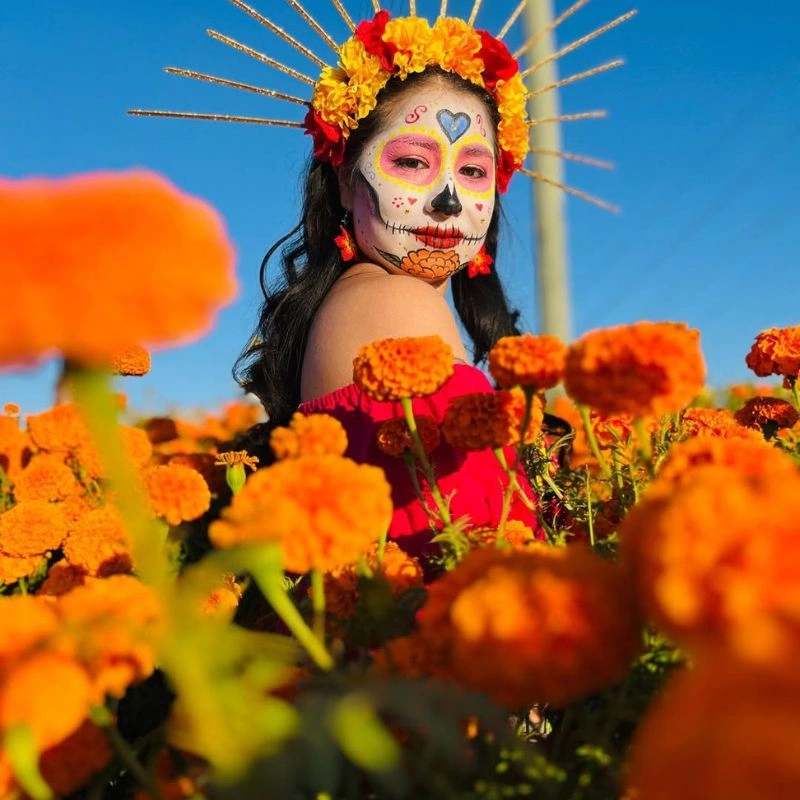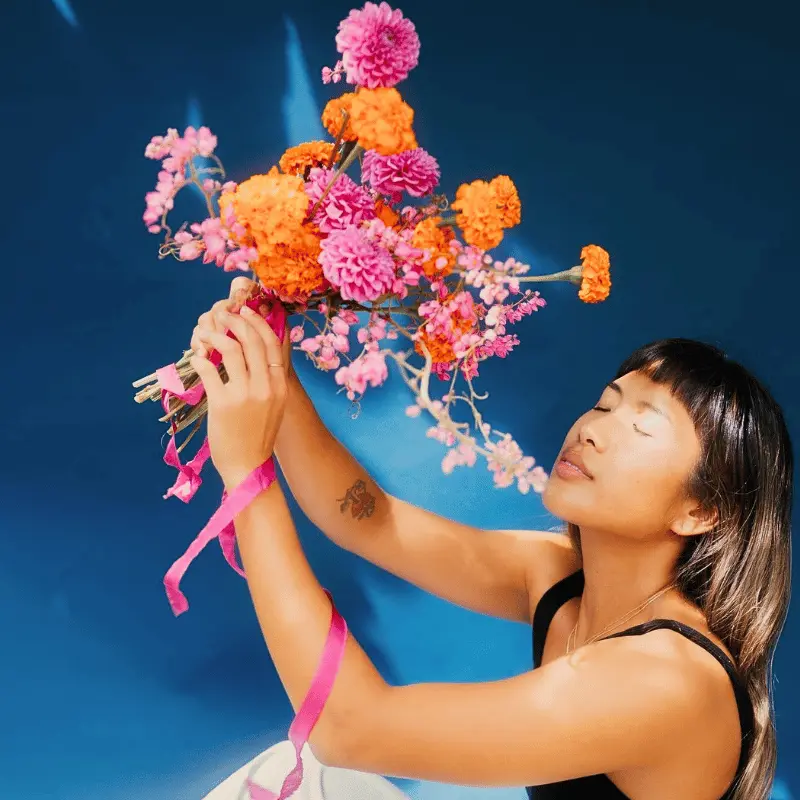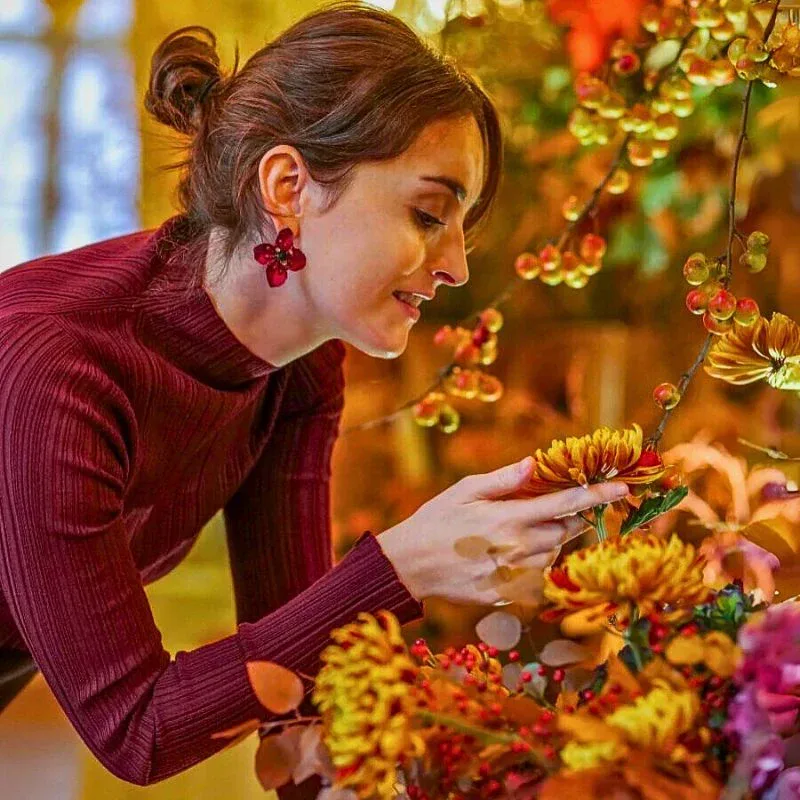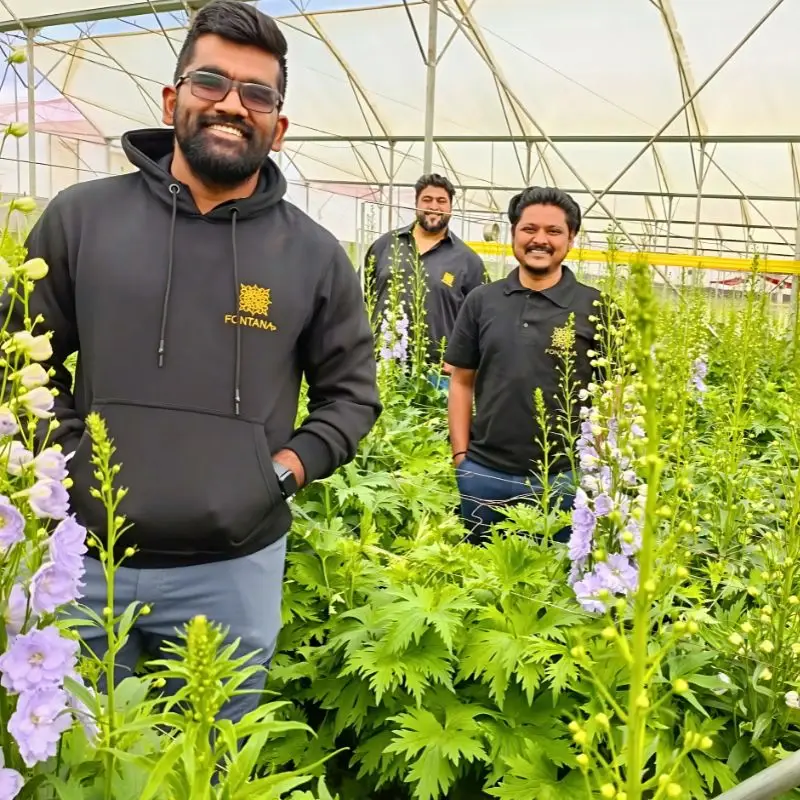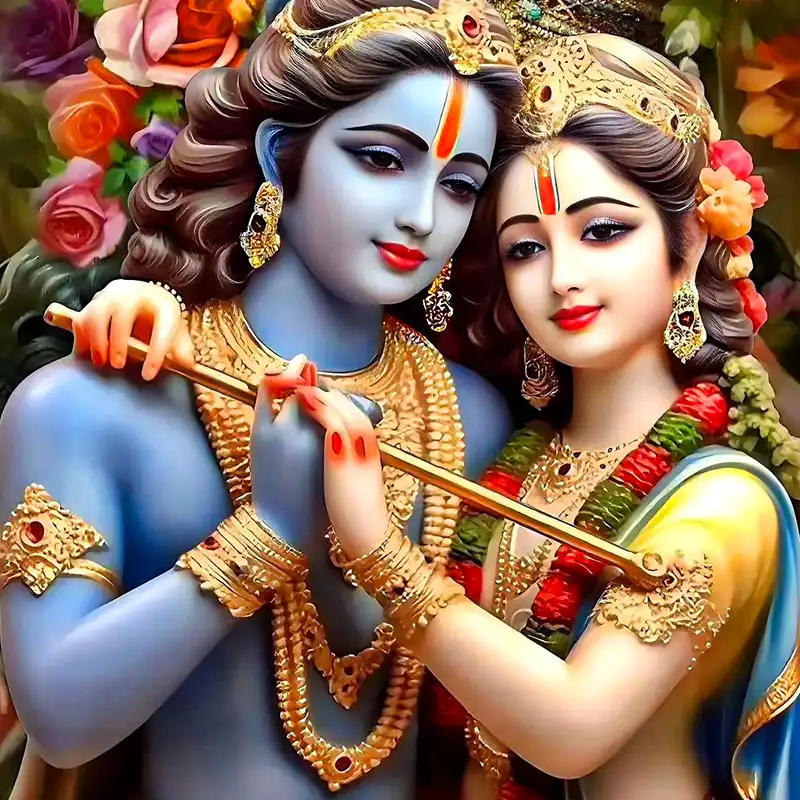Diwali illuminates both homes and hearts, melding tradition with today's zest. Diwali's vibrancy paints the world as autumn's crispness fills the air. In 2025, Diwali starts on the 18th of October on Dhanteras, with the main day being 21st October, 2025. As the date nears, excitement peaks, with every moment of the five-day fiesta, awash in color, light, and blossoms. Ever wondered, "What is Diwali?". Let's try to understand its luminous essence.
What Is Diwali?
An ancient Hindu festival, Diwali, or Deepavali, signifies the triumph of light over darkness, good over evil, and hope over despair. Revered by millions, when asked, "When is Diwali?", most would speak of the night filled with twinkling diyas, the explosion of fireworks displays, and homes adorned with a kaleidoscope of rangoli designs. Diwali is a time when families gather to celebrate, reflecting the importance of unity and tradition.
Yet this is only a fragment of the Diwali week, a five-day fiesta with each day's significance. Every aspect of the Diwali festival holds importance, from savory delights to the burst of firecrackers, and from Lakshmi Puja to the lighting of oil lamps. Diwali signifies the deeper aspects of cultural togetherness.

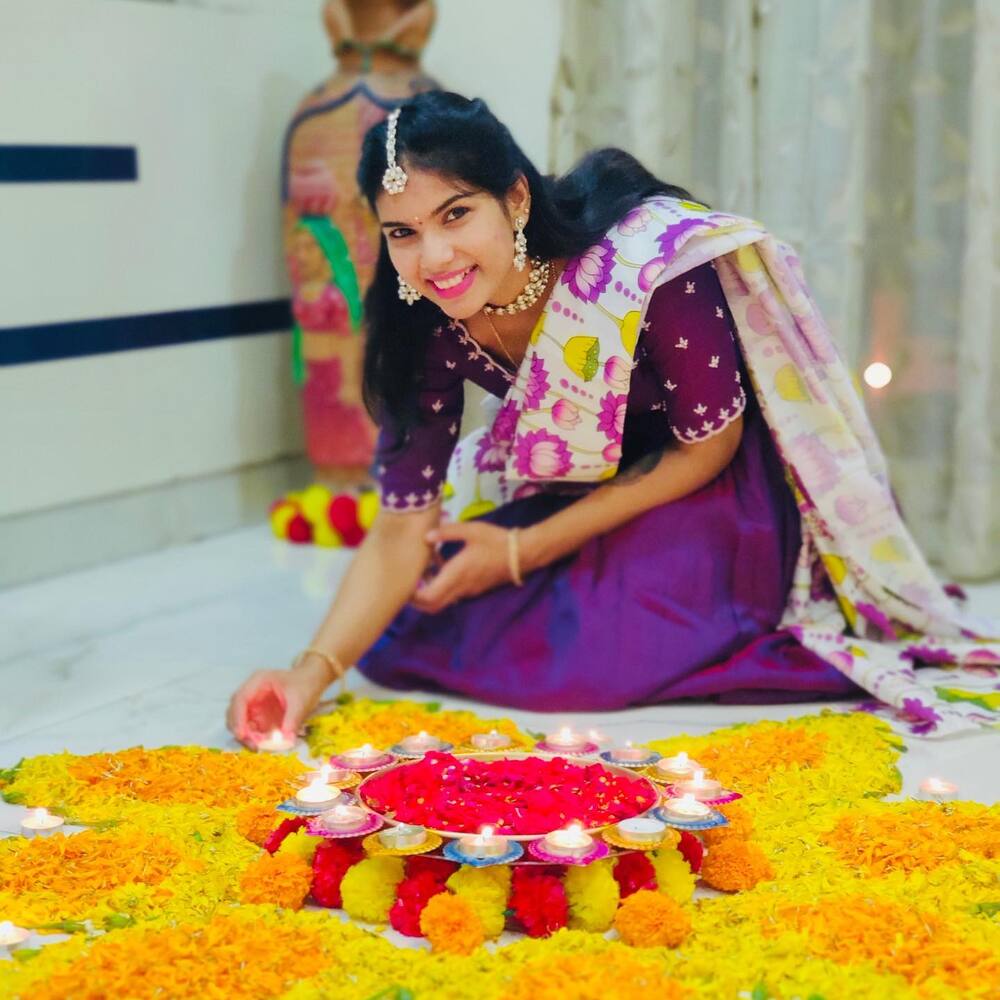
Importance of the Festival of Lights
At its core, DIwali embodies the luminous spirit of human resilience and hope. As legends narrate tales of Lord Rama's return to Ayodhya, people commemorate this day by illuminating their surroundings with clay lamps. Diwali is a symbolic representation of banishing darkness from one's life, literally and metaphorically. Every clay lamp lit during this festival eradicates a fragment of ignorance, paving the way for enlightenment. People gather, sharing stories and reaffirming their bonds during Diwali festivities.
The beauty of the Festival of Lights isn't limited to lights alone. Imagine marigold torans, their fiery oranges and yellows reflecting the glow of lamps, or rose petals enhancing the intricate designs of rangoli. As the Diwali Padwa date approaches, one can't help but admire the harmonious marriage of traditions with nature's gleaming beauties! In northern India and southern India alike, people decorate their homes, signifying prosperity and inviting Goddess Lakshmi into their abode.
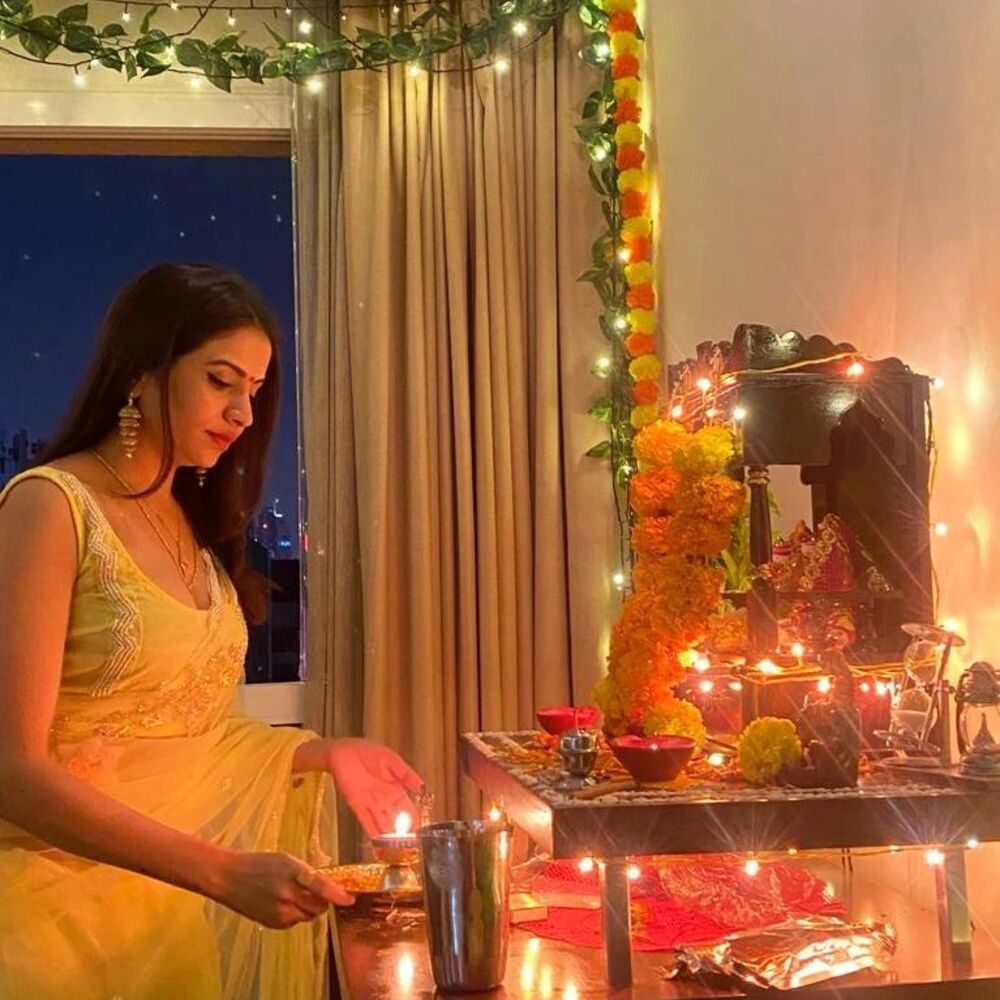
Important Diwali Dates
Diwali, a festival celebrated by millions, is often marked by the buzz of preparations weeks in advance. For those wondering, "When is Diwali?" the dates typically depend on the Hindu lunar calendar. The dates of Diwali vary each year, but the joy and anticipation remain the same as people look forward to celebrating Diwali with loved ones.
Diwali Dates Table
This five-day celebration is observed every year during early autumn post-summer harvest on the night of Amavasya (new moon), with the date marked as the darkest night according to the Hindu lunar calendar being the primary Diwali celebration day. The festival marks the victory of light, good fortune, and hope.
First Day: Dhanteras - 18th October, 2025
Kickstarting the Diwali week is Dhanteras, a day synonymous with prosperity. Scheduled a few days before the primary Diwali date, this day celebrates wealth and prosperity. Traditionally, precious metals like gold jewelry are bought, signifying the welcoming of wealth.
Adorning doorways with golden marigolds and shimmering lights makes it an unforgettable start, laying the golden floral foundation of the festival. Families gather and decorate their homes with clay lamps, making it auspicious to invite prosperity into their homes.
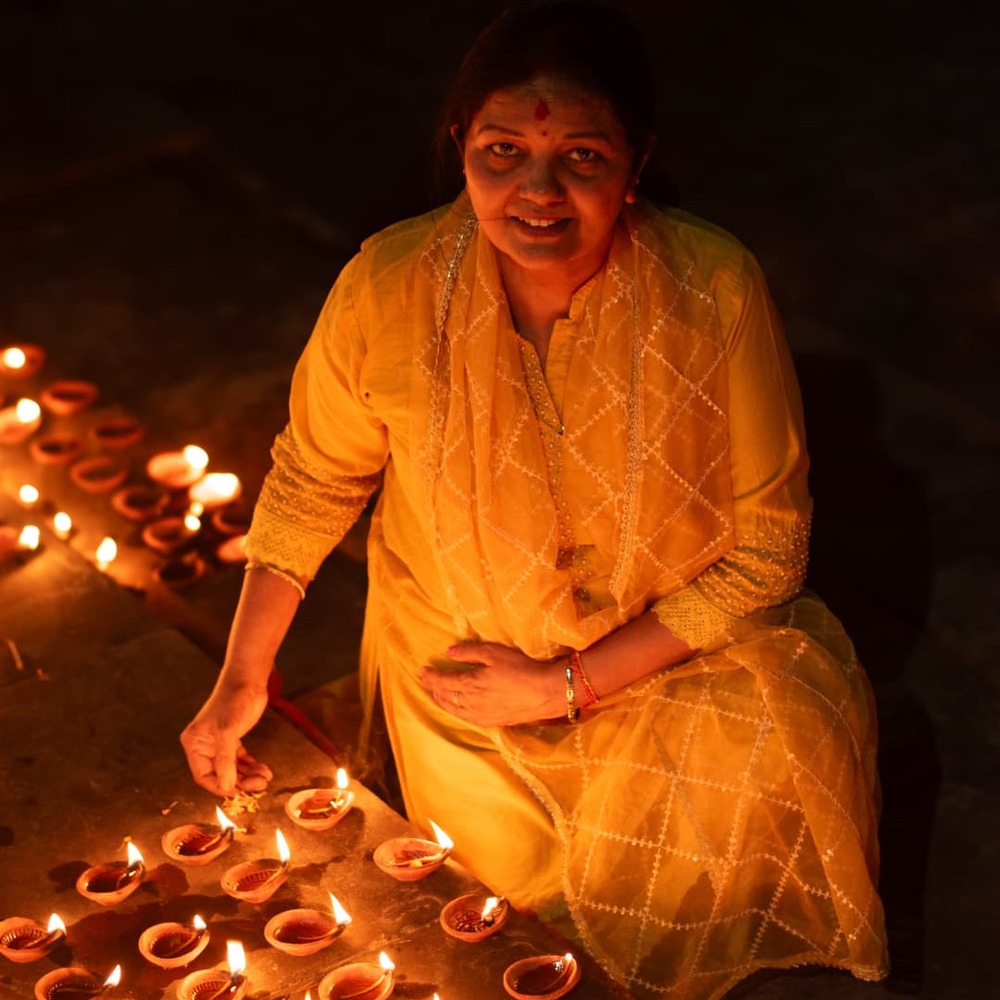
Second Day: Choti Diwali - 20th October, 2025
Choti Diwali is essentially the eve of the grand celebration. This prelude to the main Diwali is often about intimate celebrations, muted lights, and fragrant blossoms. Imagine soft petals underfoot as you light up clay lamps, each flame reflecting the promise of the main event. Choti Diwali holds great importance, especially in northern India, as it marks the preparation for Lakshmi Puja.
This day is all about embracing the quiet beauty before the vibrant burst, a subtle reminder that every element is vital in the grand celebration of Diwali Week. Choti Diwali is a day when people prepare for the upcoming festivities and ensure that everything is set for the following days.
Third-Day: Diwali and Goddess Lakshmi Puja - 21st October, 2025
The pinnacle of the five days of Diwali is undoubtedly the night of Diwali itself, an evening filled with lights and floral splendor. Diwali will see homes brightly lit, with the heart of the celebration being the Lakshmi Puja. It is a time for families to gather, offer prayers, and seek blessings for good fortune and prosperity. Lighting lamps and decorating with flowers are central activities that set the tone for the night.
Goddess Lakshmi is believed to adore lotuses, thus signifying the importance of floral decoration on this special day. With the glow of the clay lamps, this grand night becomes even more mesmerizing with the unique fragrance of flowers flowing through homes decorated to welcome Goddess Lakshmi. Lakshmi Puja is performed in almost every household, making this day significant in the Diwali festival.
Fourth Day: Padwa - 22st October, 2025
The Padwa day, following the main Diwali, is a jewel waiting to be discovered. Commemorating the love between husband and wives, this day is also celebrated as Bali-pratipada, commemorating the victory of Lord Vishnu (Vamana Avtar) over the demon king Bali. In southern India, Padwa holds immense cultural significance, mainly as it follows the Lakshmi Puja. However, looking deep into the traditions reveals the manifold purposes of this festival, carrying its importance equally for individuals in a unique way. This day is also associated with Govardhan Puja in northern India, honoring Lord Krishna.
Fifth Day: Bhai Dhooj - 23rd October, 2025
Concluding the five days of Diwali is Bhai Dhooj, a day that venerates the bond between siblings. Reminiscent of Raksha Bandhan, siblings exchange gifts and blessings, with sisters praying and wishing their brothers prosperity and longevity. In western India and other regions, Bhai Dhooj holds a significant cultural value as families gather, ensuring the spirit of love and protection among siblings. The day also honors traditions associated with Lord Yama and his sister Yamuna, who played an essential role in the mythology of this day.
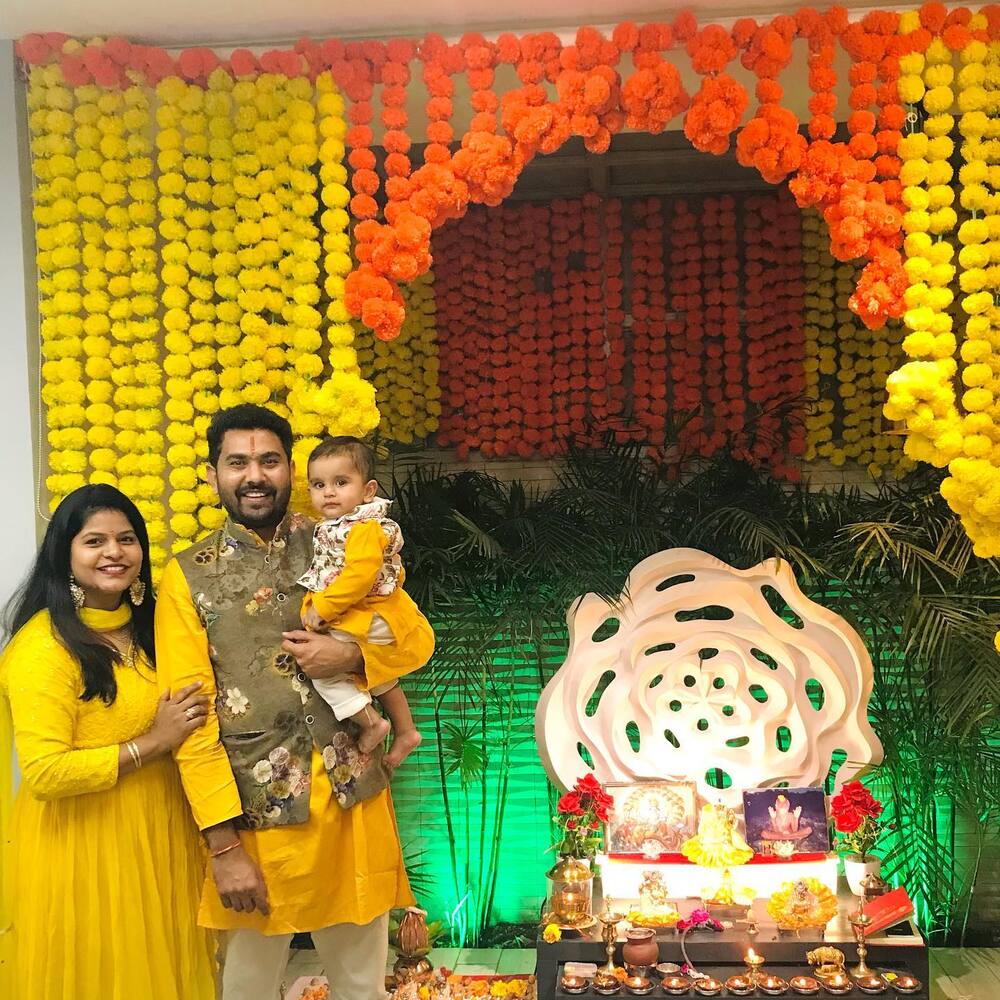
Origins and History of Diwali
With its radiance and mesmerizing hues, Diwali has long been celebrated as a timeless festival. While its celebratory essence remains consistent, the roots of Diwali are deeply connected to a variety of tales and ancient traditions, each adding a unique layer to its religious significance.
The Ramayana Connection: The Blossoming Welcome for Lord Rama
The origin story most commonly associated with Diwali is the return of Lord Rama to Ayodhya after 14 years of exile and his victorious battle against the evil king, Ravana. This day marks an important part of the Hindu epic, as residents welcomed their prince home with reverence, celebrating Diwali with fervor and joy.
As the legend goes, it was a night with no moon- a new moon - making it the darkest night of the year. This occasion is known as Diwali night, during which people illuminate Ayodhya with row of oil lamps, creating a symbolic representation of light dispelling darkness.
To combat this darkness and guide Lord Rama home, the residents of Ayodhya lit countless clay lamps, their glow reflecting the happiness of his return. While Diwali is celebrated in various ways across different cultures, this Ramayana connection remains one of the most prominent aspects of the festival, marking the main celebration and highlighting the triumph of good over evil.
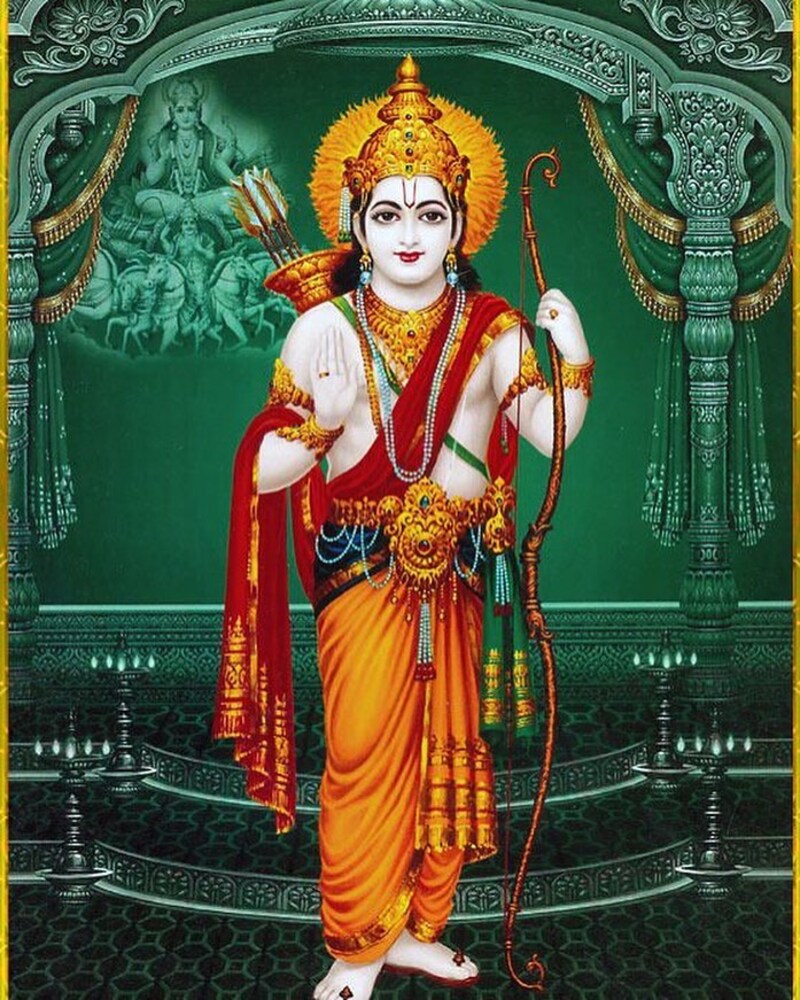
Other Historical and Mythological Stories
Beyond the Ramayana, many other tales are linked to this five-day Festival of Lights, which each day - starting from Dhanteras to Bhai Dhooj - holds unique stories and customs. Diwali marks various historical events, signifying cultural diversity in the way Hindus celebrate this festival.
For instance, on the third day of Diwali, known as Padwa, the relationship between newlywed couples is celebrated. According to legend, on this day, Goddess Parvati played a game of dice with her husband, Lord Shiva, declaring that anyone who gambled on this day would attract prosperity throughout the year. In southern India, traditions such as this highlight the diversity of beliefs surrounding Diwali celebrations.
Another story speaks of the demon-king Bali, who was sent to the underworld by Lord Vishnu in his Vamana avatar. His brief return to Earth, celebrated on Padwa, is commemorated with rituals in southern and western India. Additionally, Govardhan Puja, on the same day, honors Lord Krishna's act of lifting Mount Govardhan to protect the people of Braj from torrential rains, reinforcing the theme of divine protection and blessings.
Diwali also holds significance for Jains, as it marks the attainment of Nirvana by Lord Mahavira. For Sikhs, it is the day that Guru Hargobind Ji was freed from imprisonment by a Mughal emperor, a historical event remembered with reverence, particularly in places like Punjab and Uttar Pradesh. This festival is widely celebrated across different communities, highlighting its significance across religions.
Each story, with its unique characters and messages, reinforces the recurring theme of light overcoming darkness, of truth prevailing over deceit. These stories illustrate the religious significance and spiritual meaning that make Diwali an important festival, honoring its place in the traditions of many Hindus.
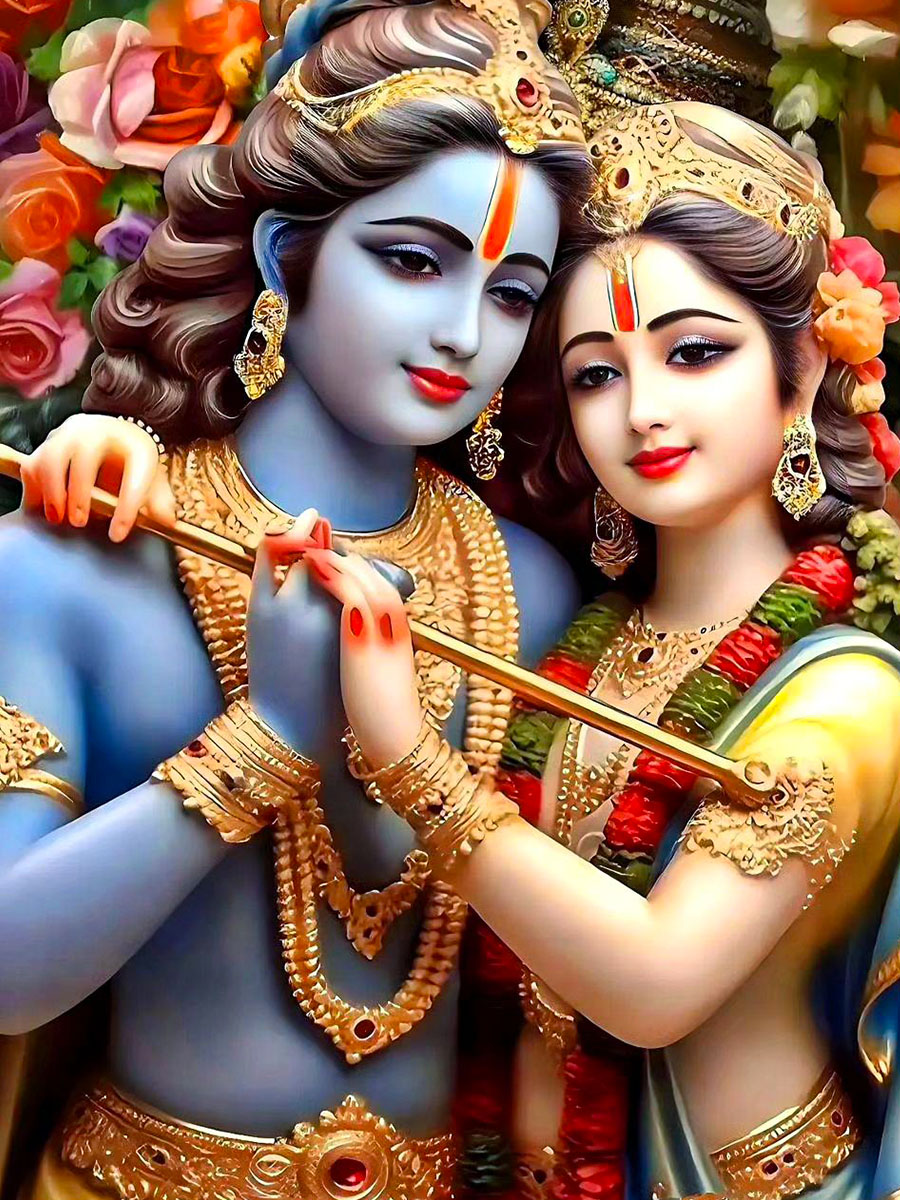
Image by @radhekrishn.vandana
The Traditions and Rituals of Diwali With Floral Twists
Crafted with devotion and deep respect for life, Diwali is an experience of color, fragrance, and texture that unfolds over the five days of Diwali. Whether exploring the origins of Diwali, understanding its rich tales, or participating in its customs, every oil lamp and floral decoration tells a story. People decorate their homes and courtyards with clay lamps and flowers, preparing to welcome visitors and celebrate with the local community.
The Tradition of Doorway Torans: Blending Greenery and Blossoms
The entrance of every home during Diwali is graced by torans - decorative hangings that typically combine mango leaves and marigold flowers. These doorway ornaments add a traditional touch to the Diwali festivities and are often crafted with blooms like roses, lilies, and orchids to reflect contemporary tastes. Not just an ornament, these floral gates are believed to welcome prosperity, inviting Goddess Lakshmi into one's abode and symbolizing the festival of lights with floral decor that sets the stage for Diwali celebrations.
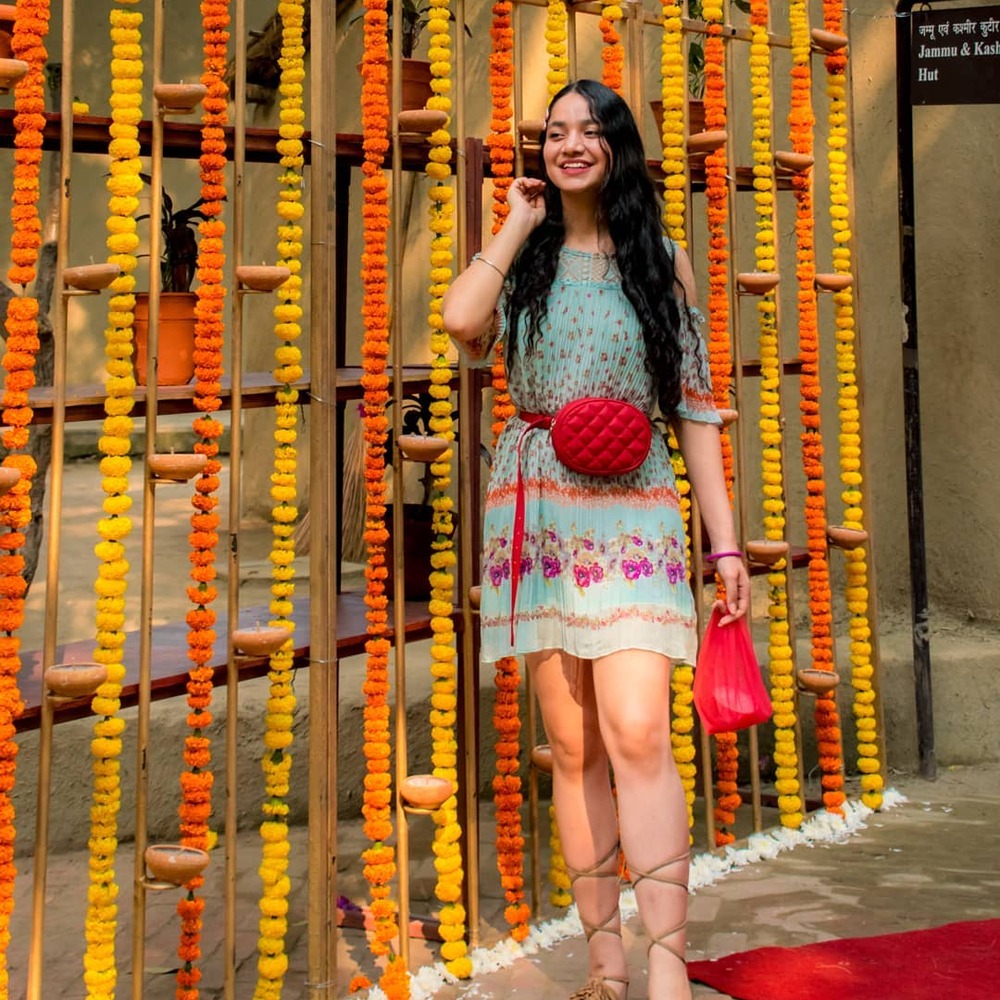
Rangoli: Integrating Colors and Flowers for Diwali Celebrations
No Diwali decoration is complete without the artistry of Rangoli. While traditionally crafted with colored powders, the recent trend, especially at Diwali inspirations, is to accentuate these designs with flower petals. Whether the radiant sun pattern using marigolds and roses or the intricate peacock designs brought alive with bird orchids, the fusion of color and floral aroma intensifies and echoes the fleeting beauty of life and joy of the Diwali festival.
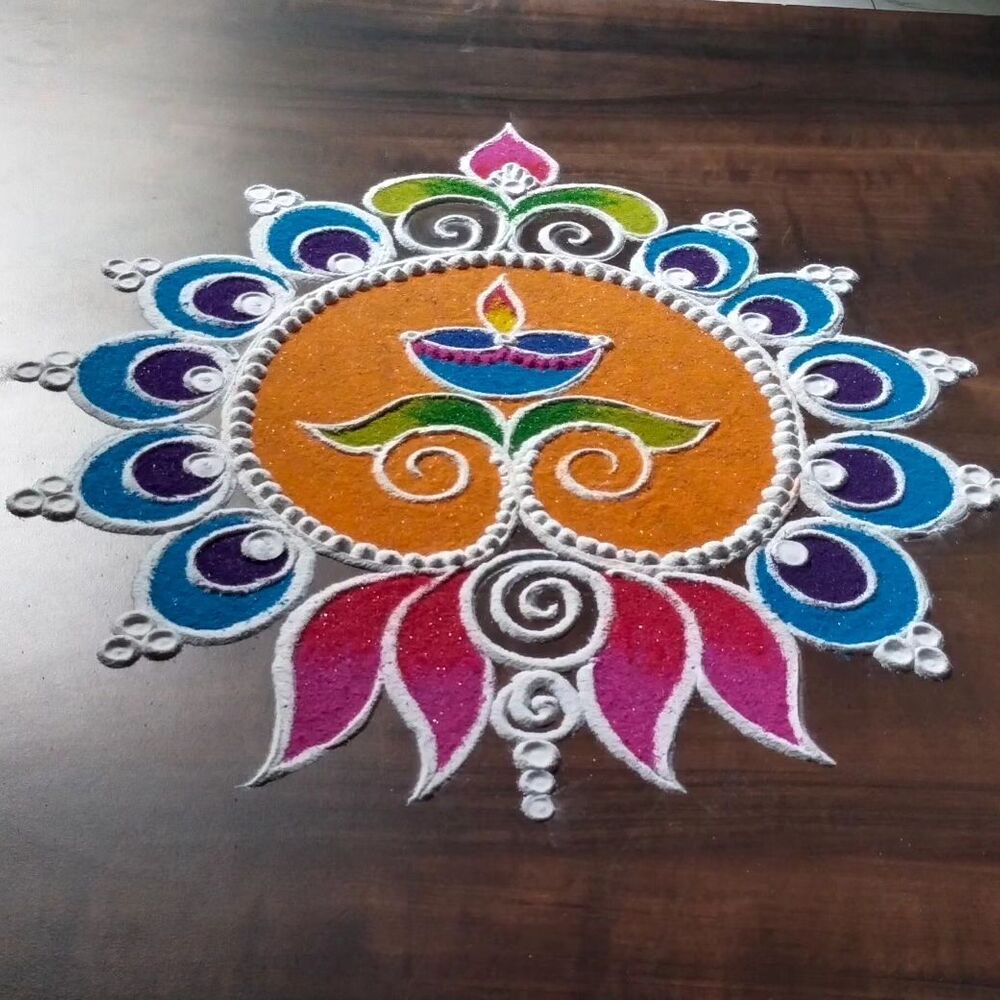
Floral Diyas: A New Trend With Floating Blooms
If you've ever wondered how to elevate the beauty of lighting diyas, here's a tip for Diwali - try floral diyas! Instead of traditional clay diyas, consider a bowl filled with water adorned with floating candles and buoyant flowers like roses, lotuses, or jasmine. As the candles shimmer, they cast reflections across the petals, creating an atmosphere that beautifully captures the spirit of Diwali. This tradition, now gaining popularity, adds a fresh touch to the festival, blending fire and floral beauty seamlessly.
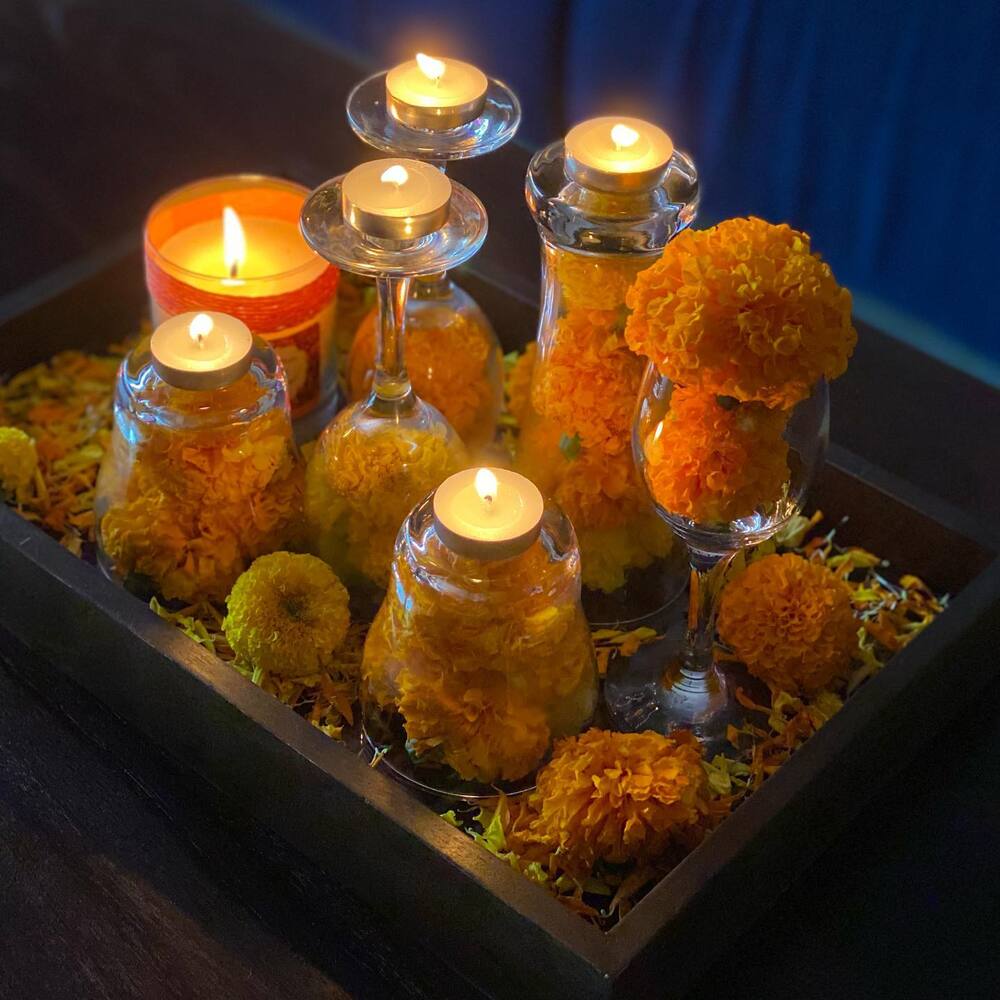
Prayers, Poojas, and Offerings
The essence of Diwali beats in its religious fervor. Homes and temples resonate with chants, while altars are adorned with flowers to welcome and honor the Hindu gods. Each day has unique prayers, pujas, and rituals that may vary according to tradition. For instance, Govardhan Puja is performed to honor Lord Krishna, and Kali Puja is celebrated in West Bengal, where people pay homage to Goddess Kali. This diversity in customs shows how Diwali honors both local traditions and shared beliefs.
Families and loved ones unite over gifts and gathering, celebrating the spirit of Diwali fully. Visits from neighbors, friends, and relatives with sweets and good wishes are a cherished part of the celebrations, reflecting how Diwali celebrates unity and joy among all.
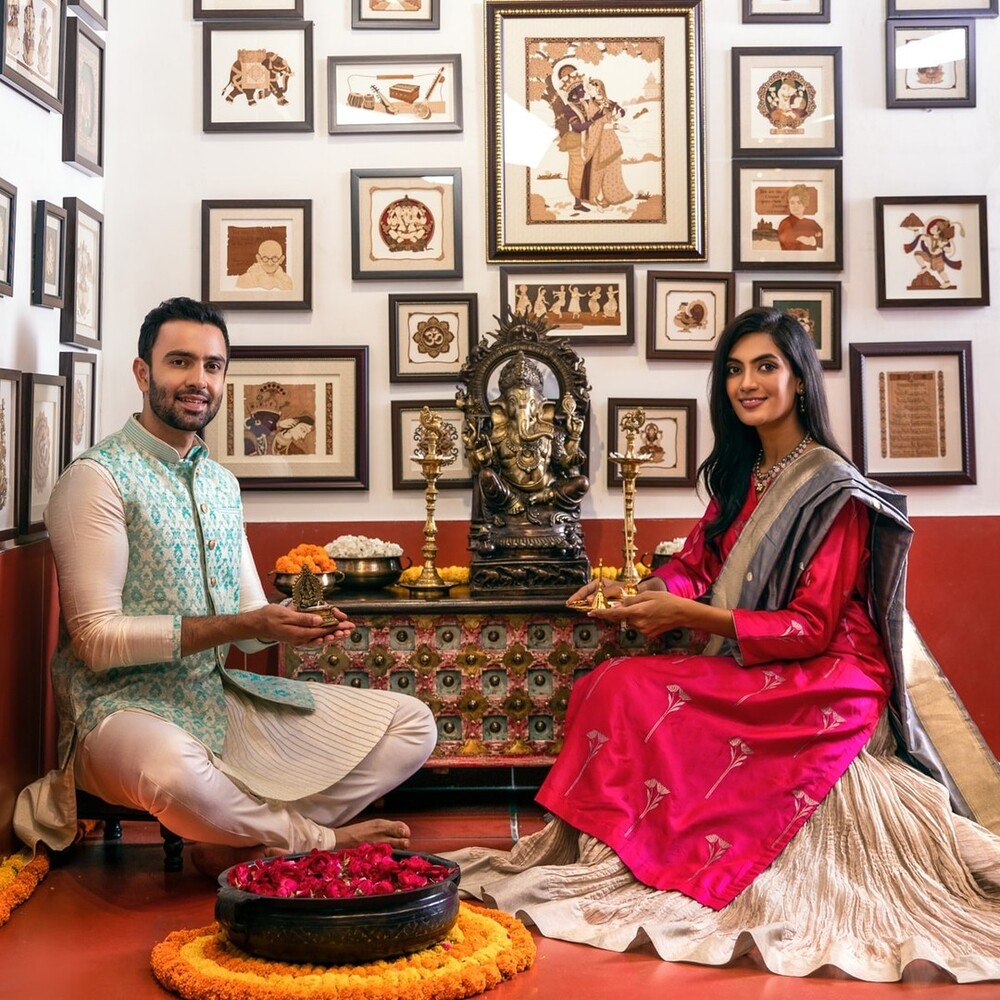
Bursting of Firecrackers
A hallmark of Diwali is the bursting of firecrackers, symbolizing festivity and triumph. On Diwali night, streets and courtyards are lit with bursts of fireworks displays and marigold decorations, presenting a stunning visual and auditory display. Firecrackers represent more than celebration - they are a tribute to Diwali's joyful spirit, even as communities begin to seek eco-friendly alternatives.
The synergy between flowers and firecrackers is symbolic - while firecrackers shine brightly and briefly, flowers signify nature's enduring beauty. One could argue that the fragrant bursts from roses and lilies rival the dazzling fireworks overhead, combining nature with tradition for a memorable celebration.
Exchange of Gifts and Sweets
Exchanging gifts and sweets is an old-age tradition during Diwali that strengthens bonds, symbolizing love and appreciation. As the festival date approaches, households fill with the aroma of delicious food as families prepare traditional sweets and delicacies. These treats bring loved ones together and represent celebrations of Diwali across India.
Just as nature offers us the beauty of flowers, Diwali allows for the sharing of tokens of affection and joy. This tradition of gifting extends beyond material exchange, focusing instead on spreading happiness and nurturing connections within the community.
Eco-Friendly Diwali: The New Trend
While Diwali has long been celebrated with grandeur, an eco-conscious movement is transforming the way we celebrate. Today, environmental awareness shapes Diwali celebrations, encouraging green and sustainable choices. This shift towards an eco-friendly Diwali highlights the commitment to cherishing the plant, ensuring our festivities remain both beautiful and responsible.
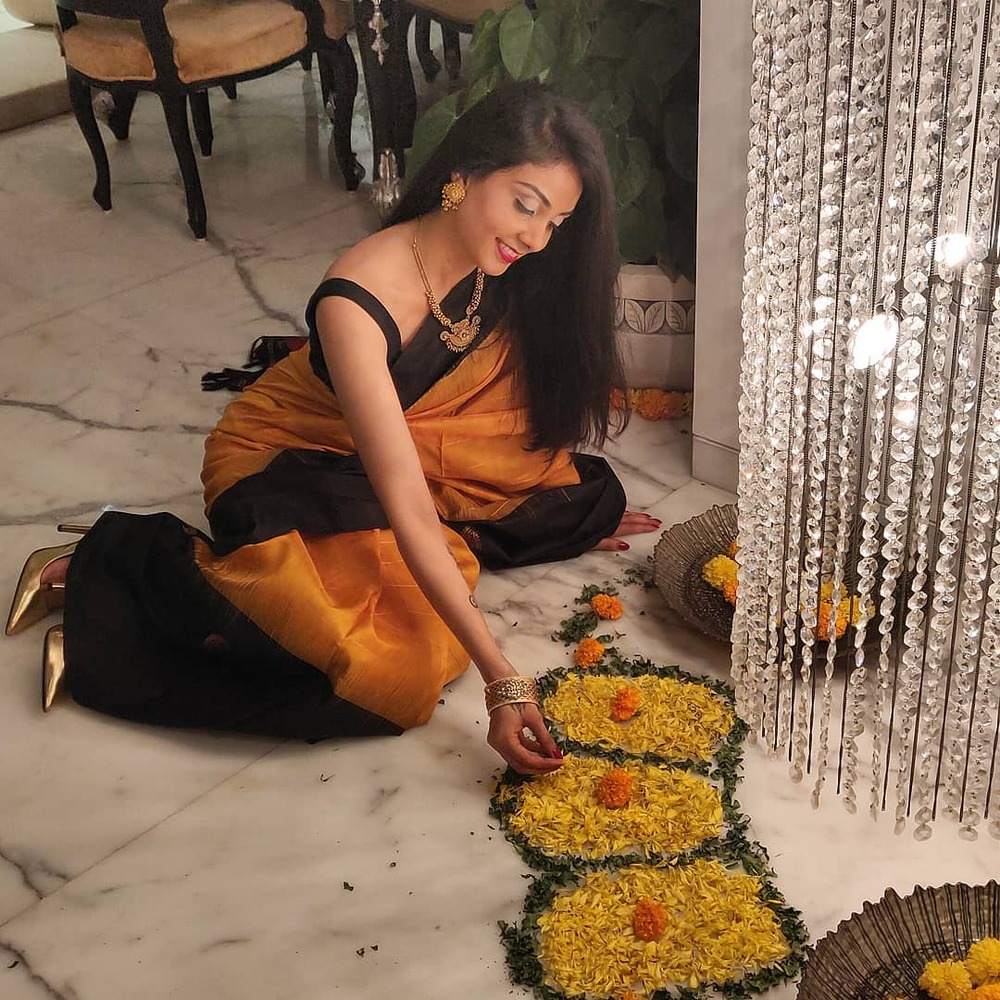
The Rise of Biodegradable Floral Decor
With each passing year, Diwali becomes even more mesmerizing when adorned with natural flowers. Floral decorations, especially those that are biodegradable, are becoming increasingly popular. These have always been integral to Hindu festivals, and this Diwali marks an enthusiastic return to sustainable decor. Choosing seasonal and local flowers over exotic options not only reduces the carbon footprint but also supports local farmers, reinforcing how Diwali honors nature and community.
Many people now opt for floral diyas, where blooms float alongside candles, creating a gentle, eco-friendly glow. The trend of incorporating flowers into Rangoli designs has also gained renewed popularity, a practice that holds both cultural and environmental value.
By choosing sustainable decorations, we celebrate the festival of lights in a way that respects the Earth. These choices reflect a meaningful way to celebrate Diwali that aligns with our responsibility towards the planet.
Green Alternatives to Firecrackers
Diwali often brings to mind the vivid sparkle of firecrackers lighting up the night. Yet, in recent years, the festival has seen a greener shift as many communities turn to eco-friendly celebrations.
While the allure of fireworks is undeniable, their environmental impact is significant. Smoke and residue can harm both flora and fauna. To maintain the spirit of Diwali without the pollution, communities now host laser light shows, offering an equally spectacular yet sustainable display.
Another innovative alternative is the use of LED-lit kites and balloons, ensuring that the sky still shines without causing environmental harm. In some regions, people gather for 'flower fireworks,' where beautiful petals are tossed into the air, mimicking the explosion of colors created by firecrackers.
These new traditions offer a breathtaking view under the twinkling Diwali lights without the accompanying noise or environmental costs, showing that the festival's essence can endure while respecting the environment.
Diwali Foods: A Culinary Delight
The vibrant Festival of Lights is as much a gastronomic celebration as a visual one. From the first day to the concluding festivities, the five days of Diwali are replete with mouthwatering delicacies; the scents of clarified butter, sugar, and fragrant spices envelope the Indian streets.
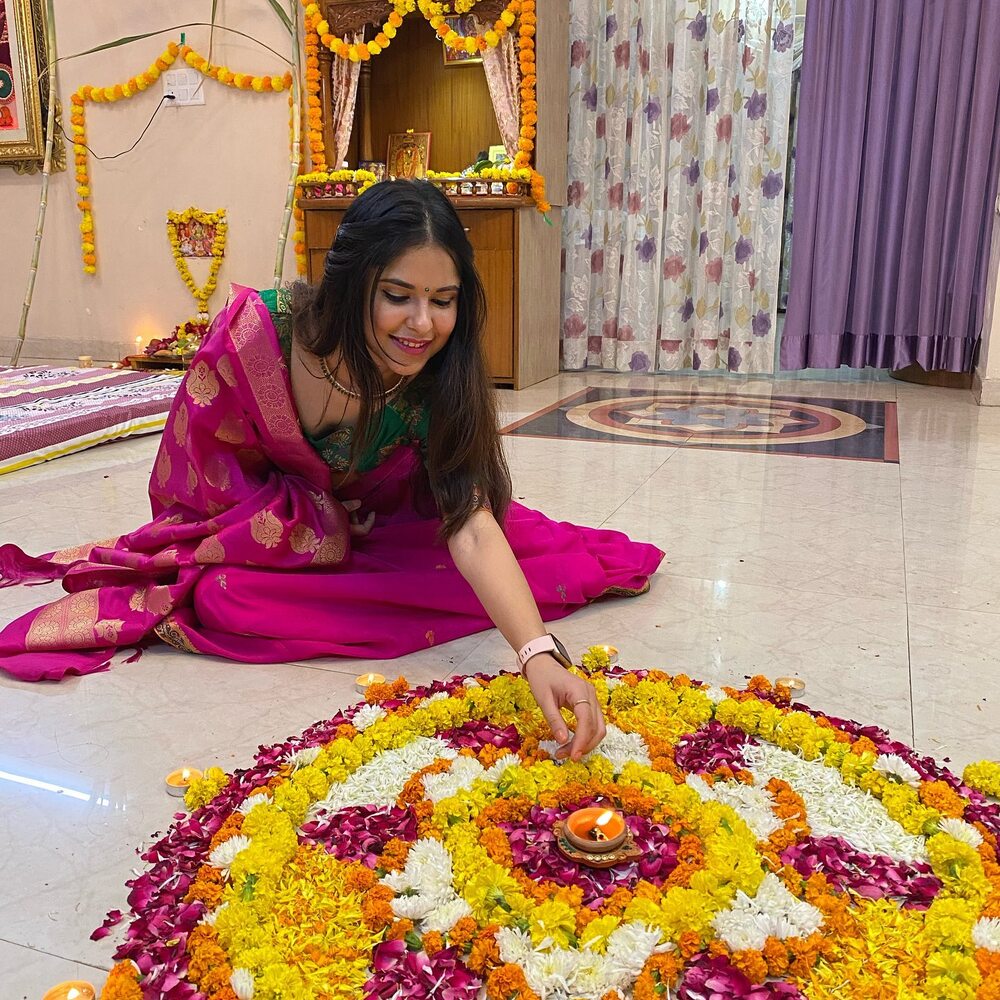
Traditional Sweets and Delicacies
Diwali carries a kaleidoscope of traditional sweets, each echoing stories of regions, traditions, and familial love. Sweets like Gulab Jamun, syrup-soaked, soft orbs, often find a delicate rose essence infusing them with a floral touch. Barfi, a dense milk-based sweet, Pedas, and Laddoos, spherical treats made from various ingredients, are other staples. Apart from this, the tradition of offering 'Kheer,' made of rice, milk, and various other ingredients, is also popular and, with its milky essence, tempting enough to even the most disciplined ones. And the list is endless!
Safety Precautions
As Diwali approaches, the excitement and anticipation of the Diwali week—a series of luminous celebrations spanning the five days of Diwali—sweeps over households globally. Every aspect of Diwali screams splendor, from the shimmering lights of diyas to the aromatic presence of floral decorations. But amid this rapturous joy, safety remains paramount.
As we approach Diwali and the primary day of Diwali, neighborhoods will be filled with vibrant pyrotechnic displays. However, revelers should remember a few key points:
- Space: Always burst firecrackers in open spaces, away from overhead obstructions and flammable materials.
- Distance: Maintain a safe distance once lit. Ensure children are supervised.
- Storage: Keep firecrackers away from ignition sources, and always store them in a cool, dry place.
By integrating these safety measures, you can guarantee that unforeseen accidents do not overshadow the sounds of joy.

Embracing the True Spirit of Diwali
Diwali invites us to celebrate and internalize the values and meanings behind this festival, imbuing the spirit of unity, love, and gratitude. Amid the sparkle of the five days, remembering what makes this festival special is essential - the shared joy, mutual respect, and the hope it brings into our lives.
This Diwali, the wishes we extend are not just for a day of joy but a lifetime of happiness.
"May your life be as vibrant as the rangolis that adorn your doorways, and as fragrant as the fresh blossoms that hang in your homes. As you light the diyas this year, may every flicker reflect a dream, a hope, a memory."
As the festival unfolds, let's pledge to celebrate responsibly, ensuring our festivities don't harm our environment or fellow beings.
In the heartwarming spirit of Diwali week, here's wishing everyone a radiant, joyous, and safe celebration. Let the essence of the festival guide you, and may your life bloom like the most exquisite flower in the garden of existence.
Header Image by @pashini_.

